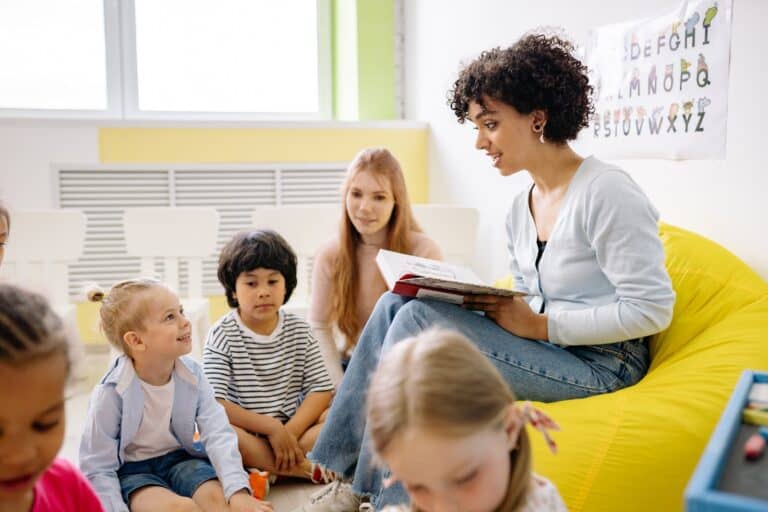Teaching kindness, as well as the power of education in fostering altruistic acts, has never been more critical. In a world that often seems tumultuous, instilling values of kindness and empathy in the younger generation is a beacon of hope. This blog post explores the significant role education plays in shaping kind, considerate, and compassionate individuals. We’ll delve into the science, practical classroom strategies, and the benefits of teaching kindness.
The Foundation of Kindness in Education

Kindness is not a new concept in education. From the early days of schooling, nurturing kind behavior has been a fundamental goal. The foundation of kindness in education lies in recognizing the impact education can have on shaping the next generation. Young kids, often starting from preschool, are introduced to the concept of kindness. This early introduction helps lay the groundwork for fostering kindness throughout their educational journey.
In recent years, there’s been a growing movement to develop a “Kindness Curriculum.” This structured approach ensures that teaching kindness is an integral part of a child’s education. It’s not just a side note but a core aspect of what students gain from their school experience.
Teaching Kindness in Schools
Teachers play a pivotal role in teaching kindness. Classroom strategies provide students with a positive emotional environment where they can thrive. From the youngest age, positive self-talk is encouraged, helping children model kindness in their interactions with peers. The ultimate goal is to mold thoughtful kids who not only learn but practice the art of being kind.
One effective approach is to teach children through the use of award-winning children’s books that exemplify acts of kindness. Reading stories of kindness and empathy helps young minds understand the concept and its importance in real life.
Altruistic Acts: The Fruit of Kindness Education
Altruistic acts are the true embodiment of the impact of teaching kindness. When we impart the values of empathy, compassion, and kindness within the educational system, we are sowing the seeds of selfless and kind behavior in our students. These acts of altruism go beyond the classroom, shaping students into compassionate individuals who are inclined to help others and make a positive difference in their communities.
This ripple effect of kindness doesn’t stop at the school gates; it extends to the broader society, fostering positive relationships and ultimately contributing to the creation of a more compassionate and empathetic world. It’s not just about what students learn; it’s about the positive transformation they bring to the world through their altruistic actions, making kindness education a pivotal aspect of our society’s well-being and harmony.
Measuring the Impact

How do we know that teaching kindness works? Research shows that kindness education has tangible benefits. Brain imaging studies support the idea that teaching kindness and emotional resilience go hand in hand. When students begin to practice empathy, they develop considerate habits and use kind words, resulting in better emotional well-being.
Fostering Kindness Beyond the Classroom
Fostering kindness beyond the classroom is a vital aspect of instilling this value in the younger generation. While schools play a crucial role in teaching kindness, the responsibility doesn’t rest solely on their shoulders. Parents, communities, and older kids all have a part to play in shaping compassionate individuals.
Encouraging children to participate in random acts of kindness not only brightens someone’s day but also imparts valuable life lessons in empathy and the importance of being kind. These acts serve as tangible examples of the golden rule – treating others as you would want to be treated. For older children, understanding and applying this rule become powerful tools for promoting kindness in their interactions, making the concept of kindness a tangible and transformative force in their lives beyond the classroom.
Challenges and Obstacles

Of course, there are challenges to teaching kindness. Some may question whether it’s the school’s role to promote kindness, or whether it should primarily be taught at home. However, brain imaging studies and research on emotional resilience and well-being support the argument for kindness education within the academic setting. Education is not just about academic practices; it’s about molding compassionate individuals who can step into someone else’s shoes and understand the power of kind actions.
Morning Meetings: A Catalyst for Kind Behaviors
One practical way to instill kindness is through morning meetings. These gatherings, common in many schools, provide students with a safe haven for empathy and understanding. Here, students learn to feel good by understanding one another’s feelings and experiences. It’s an excellent example of how classroom strategies can encourage kindness.
Final Thoughts
Teaching kindness in the education system is not just a nice-to-have but a necessity for a better, more compassionate society. It promotes empathy, self-esteem, and the most powerful habits a person can develop. Kindness education benefits kids in so many ways and offers them a great opportunity to grow as compassionate individuals.
It’s a responsibility that schools, parents, and communities must share to ensure that our children learn to be kind, not just in the classroom, but throughout their lives. By doing so, we’re paving the way for a world where kindness reigns, and good deeds are the norm, leading to less stress, more experience of empathy, and a brighter, more compassionate future for all.

